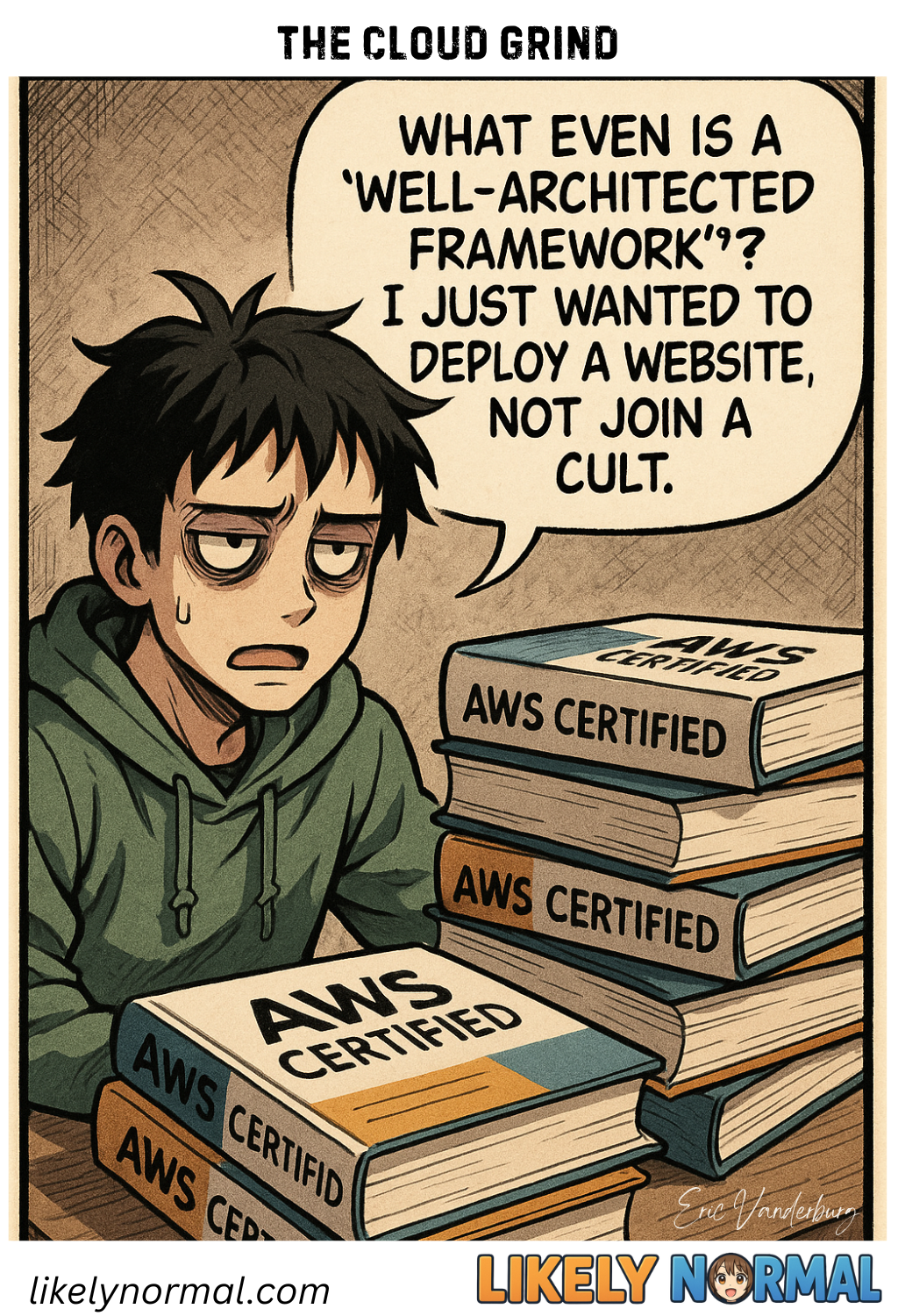AWS Cult
The cloud is a magical place where your data lives, your dreams of simplicity go to die, and every tutorial starts with “First, configure your Kubernetes cluster” like that’s a normal thing to say. Sure, cloud platforms promise “infinite scalability” and “effortless deployment,” but let’s be real: navigating AWS’s console feels like trying to pilot a spaceship after reading one page of the manual. “Just spin up a VM!” they say, as if you didn’t just spend 20 minutes Googling “What’s a VM?”
The real kicker? “Best practices.” Oh, you wanted to host a simple website? Too bad—here’s a 50-step guide on microservices, serverless architectures, and “resilient fault-tolerant multi-region deployment patterns.” It’s like asking for a sandwich and being handed a “How to Farm Wheat” textbook. And don’t even get me started on the certifications—because nothing says “I just want to run a blog” like studying for a PhD in “Advanced Cloud Wizardry.”
At this point, smaller businesses and solo devs are just staring at the cloud like it’s a locked escape room with “Infrastructure as Code” written on the door in blood. “Wait, so ‘serverless’ still needs servers?!” Yep. And “elastic” doesn’t mean it stretches—it means “your budget won’t.”
So here’s to the cloud: powerful, flexible, and about as user-friendly as a Rubik’s cube designed by a sadistic AI. Maybe one day it’ll be truly simple. Until then, happy Googling!

Discussion ¬